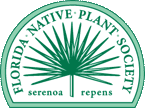FNPS Seeks Executive Director

The Society is seeking an innovative dynamic individual, self motivated with strong leadership skills to fill the position of Executive Director (ED). The responsibilities of this position include: furthering the Society’s mission, goals and objectives; fundraising; and organizing and coordinating the FNPS annual conference. Applications will be accepted by the Society’s Vice President for Administration, via email to: vpadmin@fnps.org. Submit your resume and cover letter of no more than 7 total pages no later than October 5, 2011. Position starts January 2012. EXECUTIVE DIRECTOR POSITION ANNOUNCEMENT The Florida Native Plant Society (FNPS), is a 3,000+ member, 501(c)(3), not-for-profit organization founded in 1980. The mission of the FNPS is the preservation, conservation and restoration of native plants and native plant communities. The Society is seeking an innovative dynamic individual, who is self motivated with strong leadership skills to fill the position of Executive Direct






